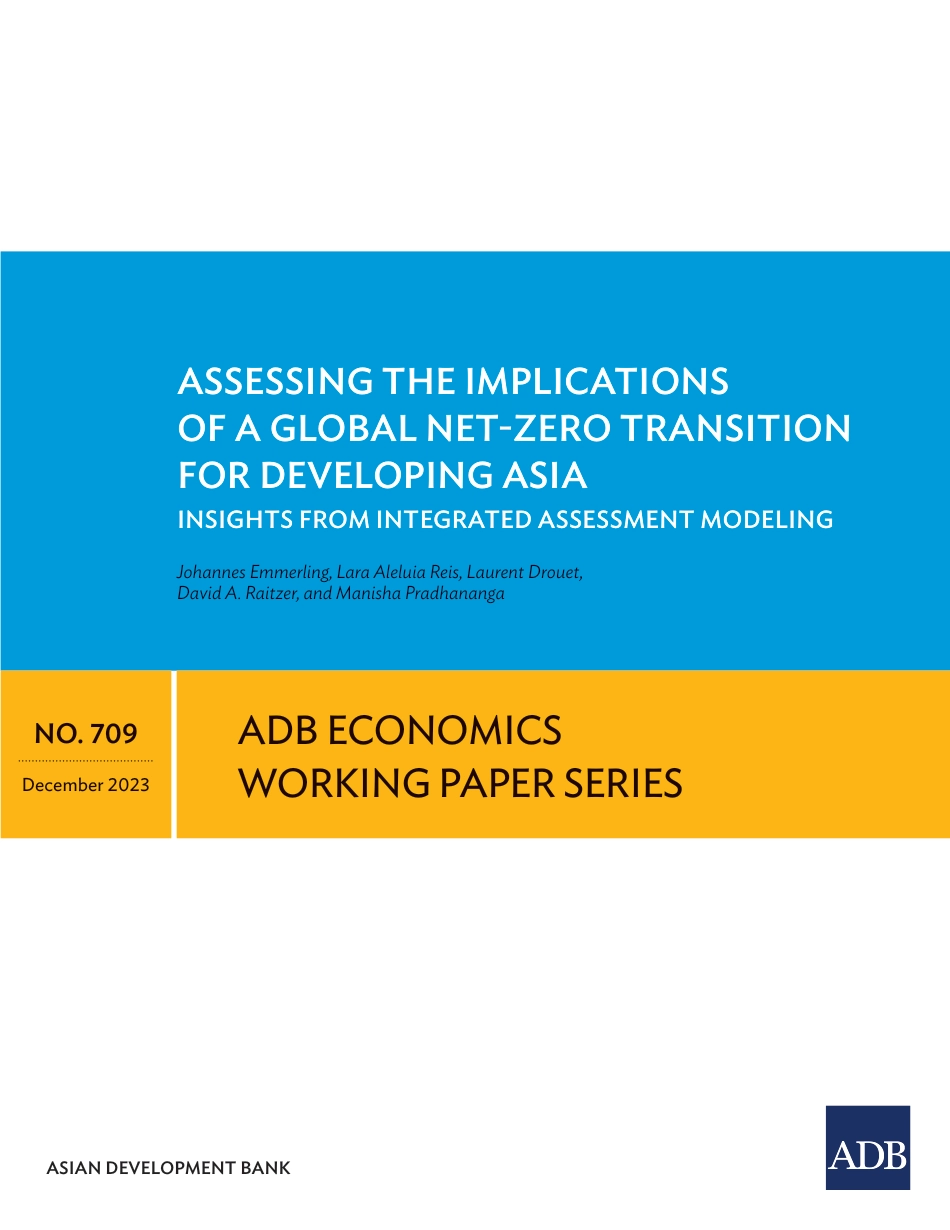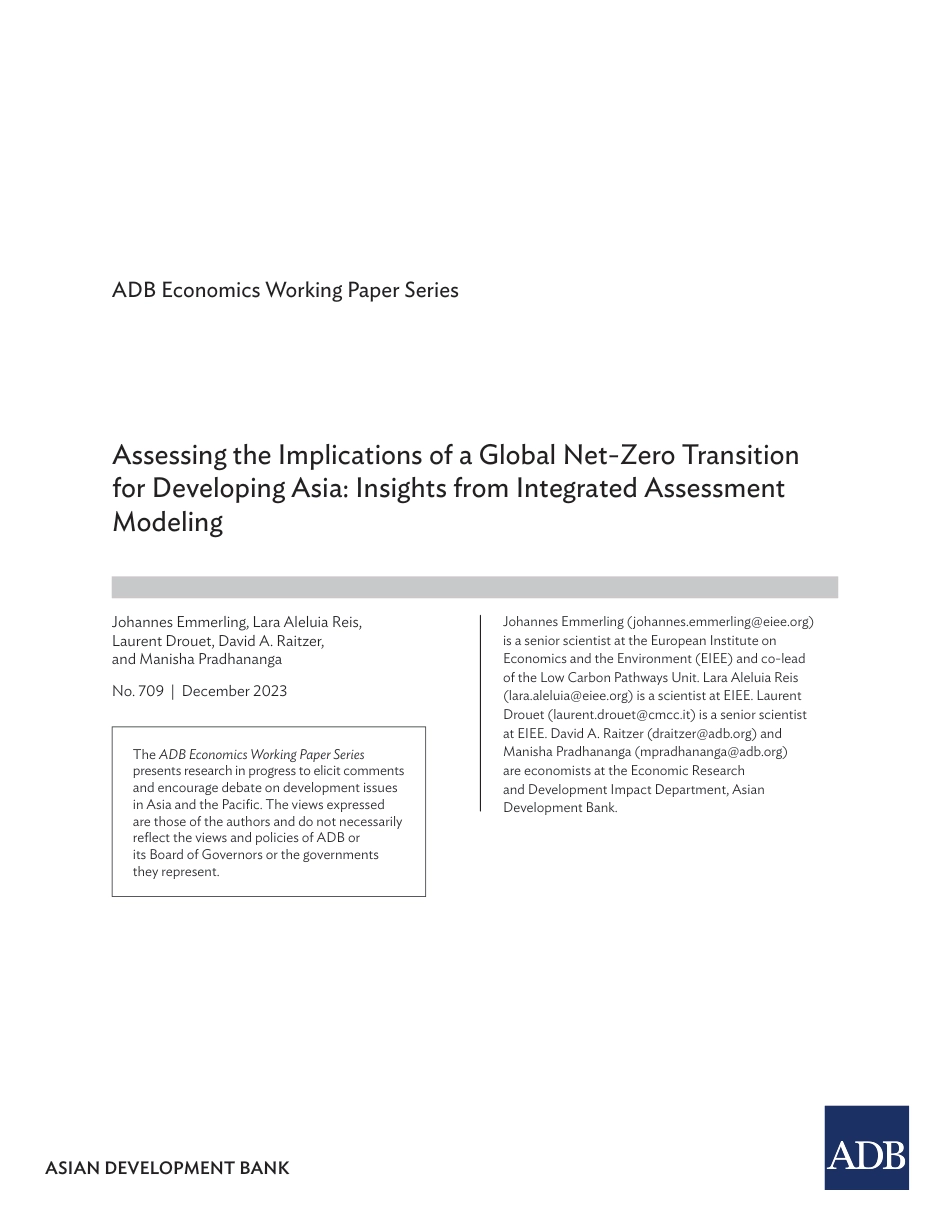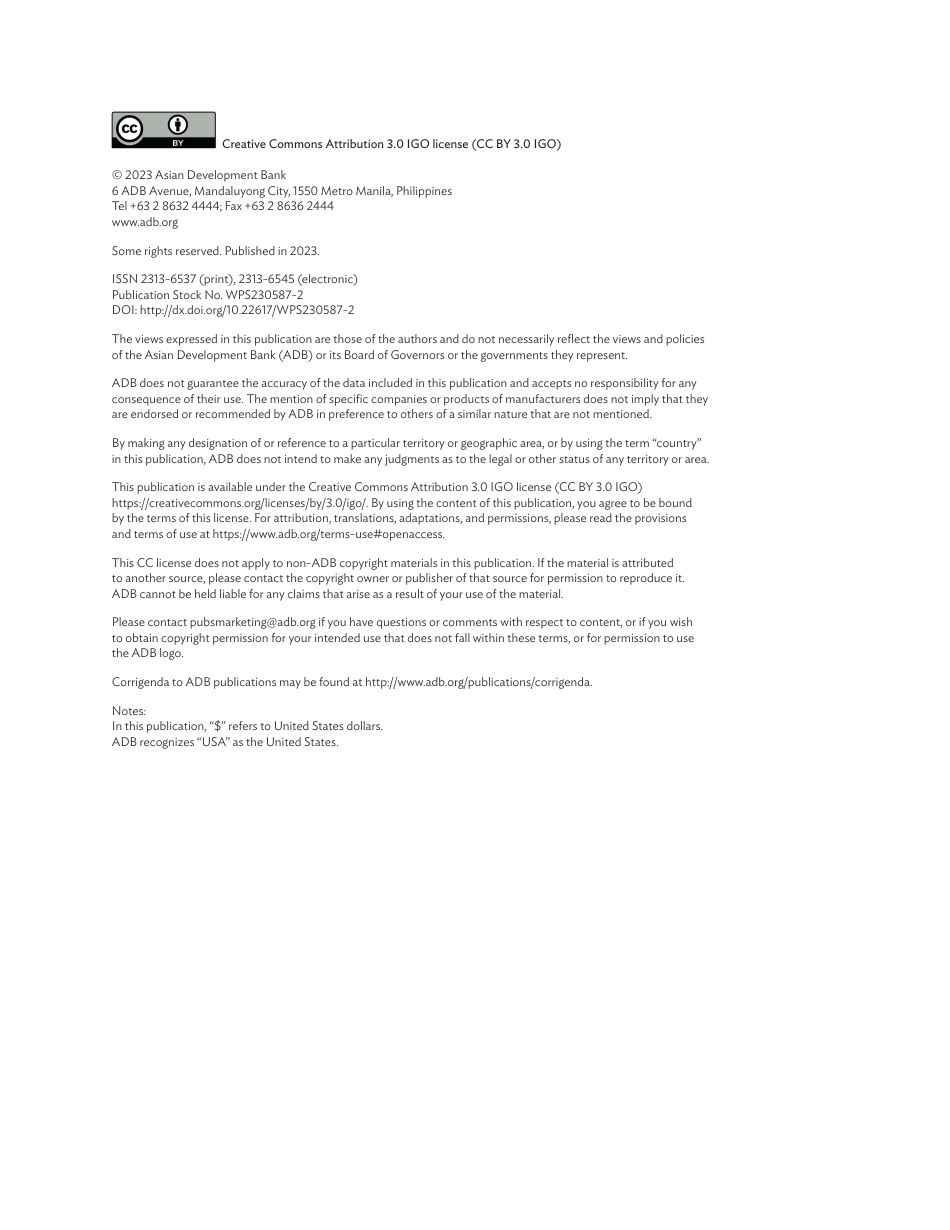ASIAN DEVELOPMENT BANKADB ECONOMICSWORKING PAPER SERIESNO. 709December 2023ASSESSING THE IMPLICATIONS OF A GLOBAL NET-ZERO TRANSITION FOR DEVELOPING ASIAINSIGHTS FROM INTEGRATED ASSESSMENT MODELINGJohannes Emmerling, Lara Aleluia Reis, Laurent Drouet, David A. Raitzer, and Manisha PradhanangaASIAN DEVELOPMENT BANKThe ADB Economics Working Paper Series presents research in progress to elicit comments and encourage debate on development issues in Asia and the Pacific. The views expressed are those of the authors and do not necessarily reflect the views and policies of ADB or its Board of Governors or the governments they represent.ADB Economics Working Paper SeriesJohannes Emmerling, Lara Aleluia Reis, Laurent Drouet, David A. Raitzer, and Manisha PradhanangaNo. 709 | December 2023Johannes Emmerling (johannes.emmerling@eiee.org) is a senior scientist at the European Institute on Economics and the Environment (EIEE) and co-lead of the Low Carbon Pathways Unit. Lara Aleluia Reis (lara.aleluia@eiee.org) is a scientist at EIEE. Laurent Drouet (laurent.drouet@cmcc.it) is a senior scientist at EIEE. David A. Raitzer (draitzer@adb.org) and Manisha Pradhananga (mpradhananga@adb.org) are economists at the Economic Research and Development Impact Department, Asian Development Bank.Assessing the Implications of a Global Net-Zero Transition for Developing Asia: Insights from Integrated Assessment Modeling Creative Commons Attribution 3.0 IGO license (CC BY 3.0 IGO)© 2023 Asian Development Bank6 ADB Avenue, Mandaluyong City, 1550 Metro Manila, PhilippinesTel +63 2 8632 4444; Fax +63 2 8636 2444www.adb.orgSome rights reserved. Published in 2023.ISSN 2313-6537 (print), 2313-6545 (electronic)Publication Stock No. WPS230587-2DOI: http://dx.doi.org/10.22617...



